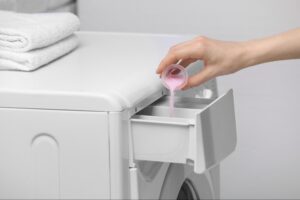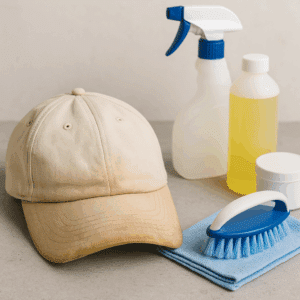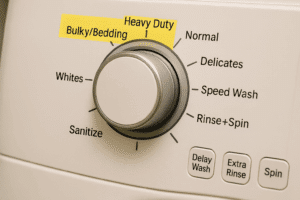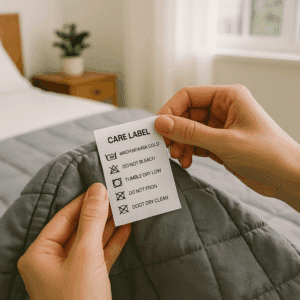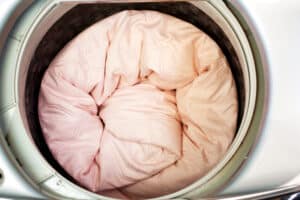What Does Fabric Softener Do?
For many households, laundry can feel like a never-ending chore. The average U.S. family runs around 7 loads of laundry each week, spending hours washing, drying, and folding clothes. To make those loads come out softer, fresher, and free of static cling, most people turn to fabric softener or dryer sheets as part of the routine. In fact, well over half of Americans use some kind of fabric softener regularly to keep laundry feeling cozy and smelling clean.
But what exactly is fabric softener doing to your laundry? Do you really need it every time? Understanding what fabric softener is, how it works, and when (or when not) to use it can help you get the most out of your laundry – and even decide if you can skip it. Let’s break it down.
What is fabric softener and how does it work?
Fabric softener is a laundry additive formulated to smooth and coat fabric fibers. It typically comes as a liquid you add during the rinse cycle (or a dryer sheet added in the dryer). The softener contains lubricating chemicals – often called “quats” or cationic surfactants – that carry a positive charge. When added to a load of wet laundry, these molecules bond to the negatively charged fibers of your clothes. The result is a thin, moisturizing layer on each fiber that makes fabrics feel softer to the touch and less prone to static electricity.
In simpler terms, fabric softener works by conditioning your clothes. As Whirlpool explains, the ingredients in fabric softener deposit onto fabrics to fight wrinkles, reduce static, and add a soft feel and pleasant scent to your laundry. By neutralizing static and lubricating fibers, softener leaves clothes more supple and comfortable than they would be with detergent alone.
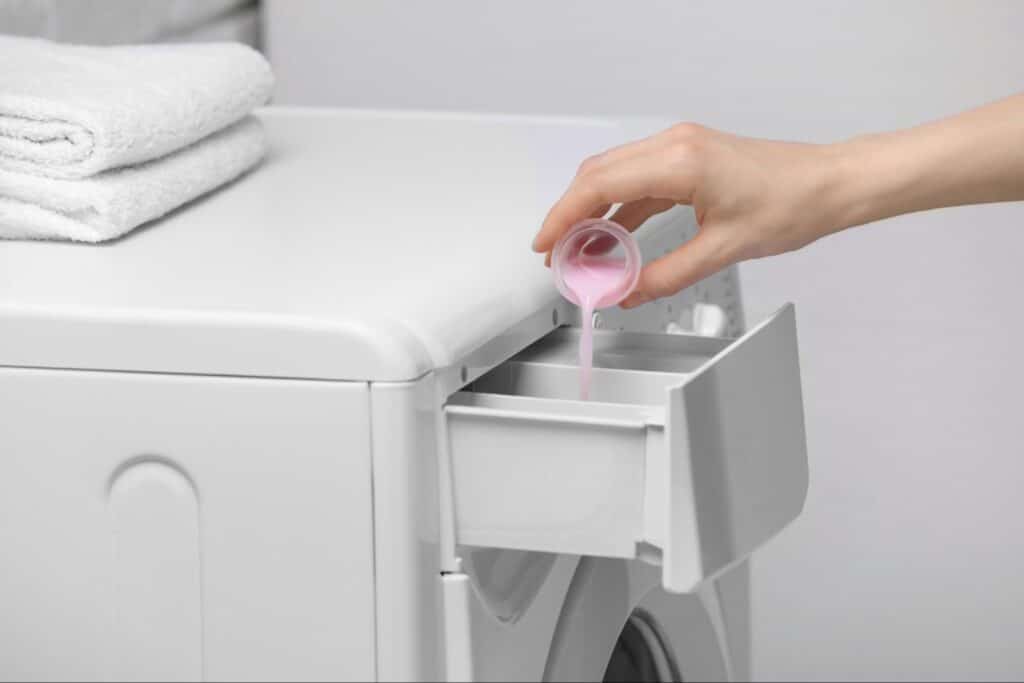
Benefits of using fabric softener
The main purpose of fabric softener is to improve how your clothes feel and smell once they’re clean. Here are the key benefits of using fabric softener in your laundry:
Softness: By coating fibers, softener makes fabrics feel softer, smoother, and fluffier. That stiff “crunch” you sometimes get from line-dried clothes is reduced, so cotton tees and towels come out more touchable and comfy.
Static reduction: Fabric softener helps tame static cling. The positive charges in softener neutralize the static charge that builds up as clothes rub together in the dryer, meaning your shirts and socks won’t stick to each other (or shock you) when you pull them out.
Wrinkle and lint guard: Because it lubricates and “relaxes” fibers, softener can also help reduce wrinkles and minor creases. Clothes may emerge from the dryer looking a bit smoother, with less need for ironing. Similarly, reducing friction means less lint and pilling over time, helping fabrics keep their original look.
Fresh fragrance: Most fabric softeners are scented, leaving a light, fresh fragrance on laundry. This can make your closet and drawers smell clean and inviting for longer. (If you prefer no scent, there are unscented or dye-free softeners available as well.)
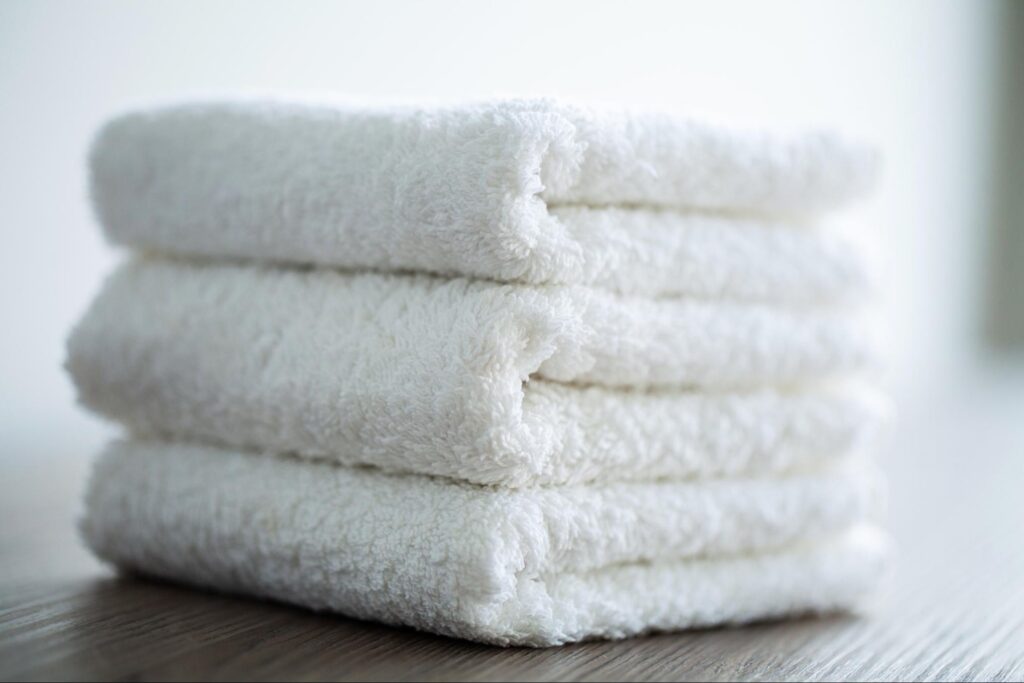
Liquid vs. dryer sheets vs. in-wash boosters
Fabric softener isn’t one single product – there are a few different ways to achieve softer, static-free laundry. The three most common options are liquid softener, dryer sheets, and in-wash “scent booster” products. Here’s how they compare:
- Liquid fabric softener: Traditional liquid softener is added to the washer during the final rinse (manually or via a dispenser). It mixes with water and disperses over your clothes, coating the fibers. Liquid softeners deliver full-strength softening and fragrance, but you have to remember to add them at the right time. Be careful not to pour directly on fabrics – dilute in water or use the machine’s dispenser to avoid any staining.
- Dryer sheets: These are thin sheets treated with similar softening agents (often stearic acid or quaternary compounds). You toss a sheet into the dryer with your wet clothes. As the dryer heats up, the sheet’s coating melts and transfers to fabrics. Dryer sheets are convenient – just one per load – and great for controlling static. However, they can leave residue inside your dryer’s lint filter over time, so you’ll want to clean it periodically. Also, like liquid softener, avoid using dryer sheets with moisture-wicking athletic gear or microfiber cloths (more on that below).
- In-wash scent boosters: Scent boosters (like fragrance beads or crystals) are a newer type of laundry additive. They’re not exactly “fabric softeners,” but they are often used alongside or instead of softener for extra freshness. You sprinkle these scented pellets into the washer drum at the start of the wash, and they dissolve to infuse fabrics with fragrance. The benefit is a long-lasting scent, but note that these products usually don’t contain the same softening agents – so they add smell, not softness. Many people use them in addition to a softener or dryer sheet, or on towels and activewear loads where they want fragrance but might skip softener.
All three of these options can make your laundry feel nicer. Some folks even use a combination (for example, liquid softener in the wash and a dryer sheet for extra static control). Just keep in mind that using too much – like doubling up on liquid and sheets – can lead to excess residue on clothes. Often one method is sufficient to get the benefits.
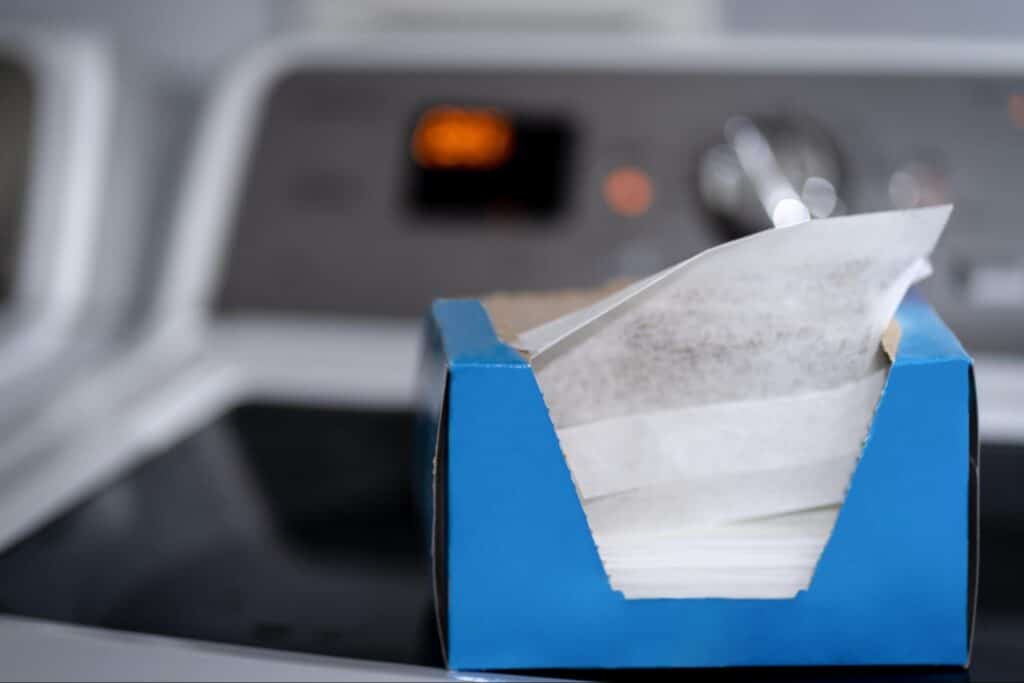
Downsides of fabric softener (and when to skip it)
Fabric softeners have clear benefits, but there are also a few drawbacks and situations where you’ll want to avoid using them. It’s important to know these caveats so you don’t accidentally do more harm than good:
Buildup on fabrics and machines: Over time, liquid softeners and dryer sheets can leave a waxy residue on clothing and inside your washing machine. If you’ve ever noticed greasy streaks or a filmy coating in your washer’s dispenser, softener overuse might be the culprit. In high-efficiency (HE) washers especially, excess softener can cling to the drum and door seal, potentially contributing to mildew or odors. Consumer Reports has even warned that fabric softener residue can encourage mold growth in front-loading washers and may damage your machine’s performance over the long run. The takeaway: use the recommended amount of softener (or less), and periodically run a washer cleaning cycle to clear out any buildup.
Reduced absorbency: Fabric softener’s coating doesn’t play well with certain materials – most notably, towels. The chemicals that make fibers feel silky can also make them less absorbent. If you’ve ever wondered why a towel seems to push water around instead of soaking it up, heavy use of softener could be a cause. For this reason, many people either skip softener on towel loads or use it very sparingly. (Tip: If you do use softener on towels, try using half the usual dose, or add it every few washes instead of every time.)
Performance fabrics and finishes: You should also skip softener on moisture-wicking athletic wear, microfiber cleaning cloths, or any fabric designed to repel water. The softener’s waxy coating can clog up the tiny pores that make high-performance fabrics effective, reducing their wicking ability and breathability. Similarly, with items labeled as flame-resistant (like children’s sleepwear) or water-repellent (like outdoor gear), fabric softener can diminish those special properties by leaving a film on the fibers. Always check your clothing care labels – if a tag says “no fabric softener,” there’s a good reason. And if you’re washing baby items or have sensitive skin in the family, it might be best to avoid softeners on those loads to eliminate any chemical residues next to skin.
Allergies and sensitivities: Fragrances and dyes in fabric softeners can trigger skin irritation for some people. If you have sensitive skin or allergies, you might find that clothes washed with certain softeners make you itch or break out. Using dye-free, fragrance-free (hypoallergenic) softener formulas can help, but the safest route for sensitive folks is often to skip softeners altogether. (Dryer balls or vinegar, discussed below, can be good alternatives in this case.) Pet bedding or baby clothes might also be best washed without softener to avoid exposing kids and animals to unnecessary additives.
In short, fabric softener isn’t meant for every load. If you’re washing towels, athletic gear, or anything that specifically says not to use it, it’s best to skip it. And if you do choose to use softener, a little goes a long way – using more than the instructions call for won’t make your clothes “extra soft,” it will just lead to buildup.
Alternatives to fabric softener
The good news is that if you decide to cut back on fabric softener (or cut it out completely), you can still get soft, static-free laundry. There are several simple alternatives and laundry tricks people use to replace commercial softeners:
Dryer balls: One popular option is tossing a few dryer balls into your dryer with each load. These are reusable balls (often made of wool, though plastic or rubber versions exist) that bounce around and separate your clothes as they dry. By moving between fabric layers, dryer balls prevent a lot of the clumping and friction that produce static. They also “massage” fabrics to soften them without any chemicals. As a bonus, dryer balls can slightly reduce drying time by improving airflow. If you miss the added scent from softener, you can put a couple of drops of essential oil on wool dryer balls to give your laundry a light natural fragrance.
White vinegar rinse: An old-fashioned but effective trick is using distilled white vinegar as a natural fabric softener. Pour about 1/2 cup of white vinegar into the washer’s rinse cycle (or into the fabric softener dispenser if your machine has one). The vinegar helps remove any soapy residue from fibers and relaxes the fabric, leaving clothes softer. Don’t worry – the vinegar smell rinses out and won’t linger on your laundry. This method also deodorizes your washer and can reduce mineral deposits if you have hard water. (Just avoid using vinegar on very delicate fabrics or anything with elastic, since the acidity could be harsh on those over time.)
Baking soda: Baking soda is another budget-friendly, natural laundry booster. Adding about half a cup of baking soda into the wash cycle (along with your detergent) can soften your clothes by balancing the water’s pH and helping to rinse away mineral build-up on fibers. Baking soda also neutralizes odors. It’s a gentle alternative that’s especially useful if you have hard water, which can cause clothes to feel stiff. (Be sure to add it during the wash, not the rinse, so it has time to dissolve.)
Air drying: If static cling is your main concern, one of the simplest alternatives is to skip the dryer entirely for certain items. Hanging clothes up to air dry (either indoors on a rack or outside on a line) eliminates the friction and electron exchange that cause static in the dryer. Air drying also avoids exposing fabrics to high heat, so your clothes may last longer and have fewer wrinkles. The downside is air-dried laundry can feel a bit stiffer, but giving garments a good shake – or tossing them in the dryer for just a few minutes after they’re dry – can help fluff them back up.
Each of these methods can achieve some of the effects of fabric softener without the potential negatives. You might find that a combination works best – for instance, using vinegar in the rinse and dryer balls in the dryer, or air-drying certain delicate items and using baking soda for heavy wash loads. It may take a little experimentation, but many people are able to keep their laundry soft and static-free while completely avoiding commercial softeners.
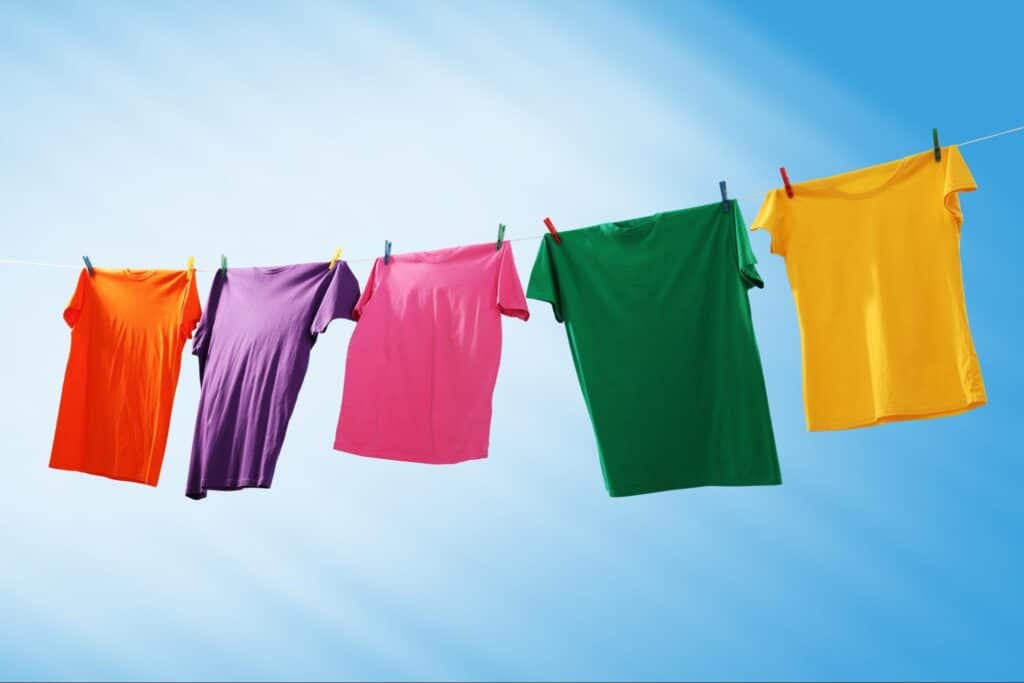
How fabric softener fits into your laundry routine
It’s worth putting fabric softener in perspective: it’s an optional add-on, not a core essential for clean laundry. The real work of cleaning your clothes is done by your detergent (plus your washer’s water and agitation). Fabric softener’s role is just to add a finishing touch of softness or scent. In fact, you do not need to use softener in every load – plenty of people never use it and still have clean, comfortable clothes.
Think of softener as one tool in your laundry toolbox. Use it when it makes sense for the fabrics and results you want, and skip it when it’s not appropriate. For example, you might use softener on your bed linens and favorite t-shirts for that cozy, fresh feel, but skip it on workout gear and towels. Always follow the care labels: if a tag says “no fabric softener,” there’s likely a reason. And if you have any doubts (say, for baby items or sensitive skin loads), err on the side of using a gentle alternative or nothing at all.
Keep in mind that moderation is key. Using more detergent or softener than necessary won’t get clothes cleaner or softer – it just leads to build-up (and wasted money). High-efficiency washers in particular are designed to use minimal product. So measure out the recommended amount of softener if you use it, and don’t combine multiple softening methods in one load unless you really need to. Your laundry will come out just as nice with a simpler routine.
Whether you do your laundry at home or at a self-service laundry, the principles remain the same: focus on good washing fundamentals, and add fabric softener only when it’s beneficial. It’s also a good idea to run an occasional cleaning cycle on your washer (using vinegar or a washer cleaner) if you regularly use softener or other additives – this keeps the machine and your clothes from getting gunked up with residue.
By keeping fabric softener in its proper place (as an optional luxury, not a necessity), you can simplify your laundry routine. And simplifying matters, because Americans already spend a lot of time on laundry – over 4 hours a week on average, making it one of the top three most time-consuming household chores. The less fuss in each load, the more time you get back for yourself.
When to consider a professional laundry service
What if you’d like to skip the laundry grind altogether? If you’re dealing with that never-ending cycle of wash-dry-fold – and maybe worrying about which products to use – it may be time to let a professional service help. Many of your neighbors are already trading laundry day for extra free time by using Spincycle’s laundry services.
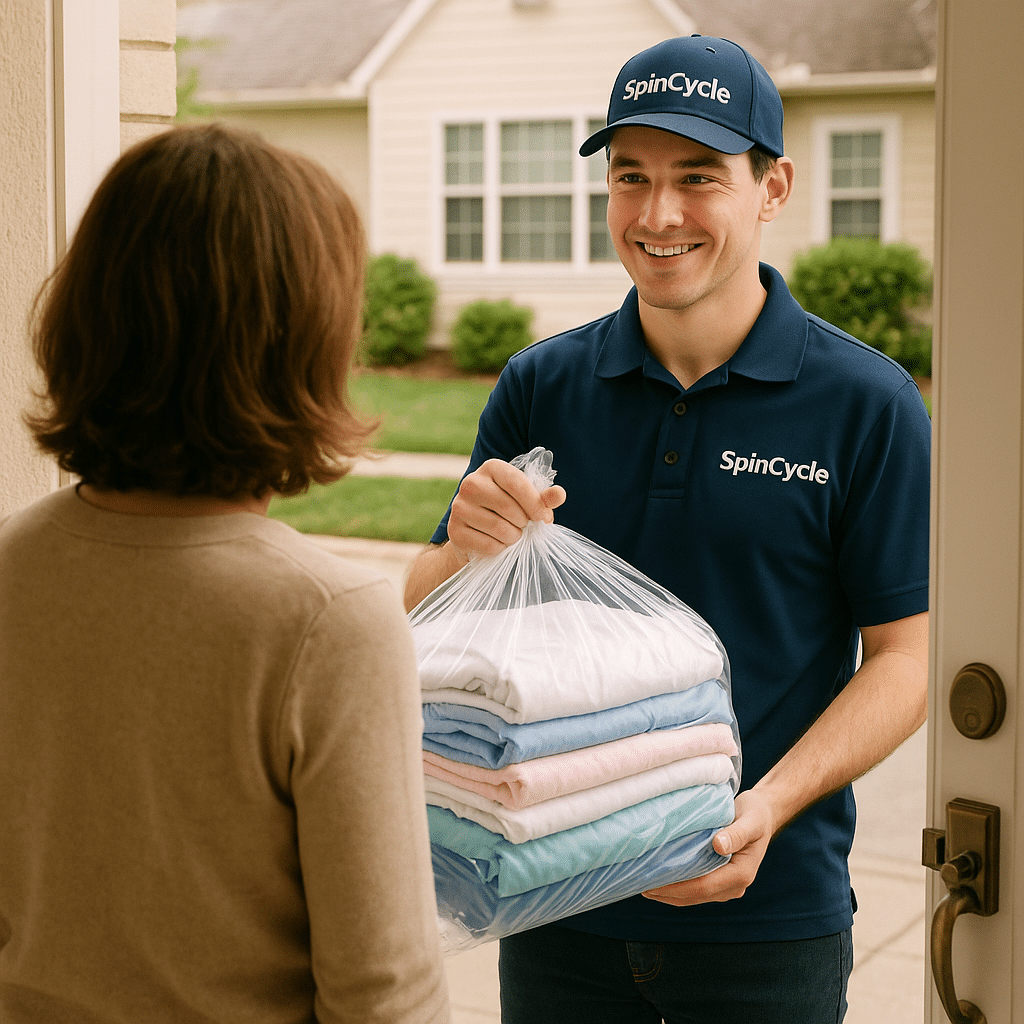
Our team at Spincycle can take this chore off your plate and return your clothes fresh, soft, and ready to wear. With our wash-and-fold service, we handle everything from sorting and washing to drying and neatly folding your laundry into drawer-ready stacks. We’re clean-obsessed, using advanced methods like ozone sanitization to deep-clean each load (far beyond what any fabric softener could do). And we do it all with a friendly, human touch – after all, we’re a proud Chicago-owned business and part of the community.
For the ultimate convenience, you can even skip the trip. Schedule a pickup and delivery, and we’ll come to your door to collect your laundry. Our driver will whisk your clothes to our facility, get everything perfectly cleaned and fluffed, and bring it back to you usually by the next day. The only thing you need to do is put your freshly cleaned laundry away.
By letting a professional service lighten your load, you free up those hours you’d normally spend hovering over the washer and dryer. You can spend that time on work, family, or simply relaxing – all while knowing your clothes are being cared for by experts. In the end, whether you use fabric softener at home or not, the goal is the same: clean, comfortable clothes and more time to enjoy life. Spincycle is here to help make that happen whenever you’re ready to leave the laundry to us.


